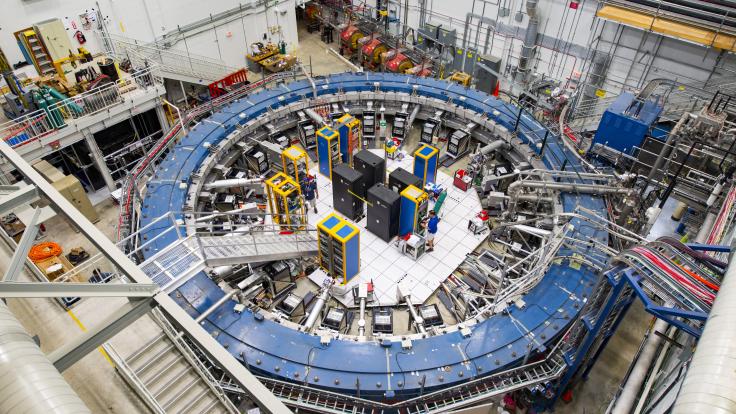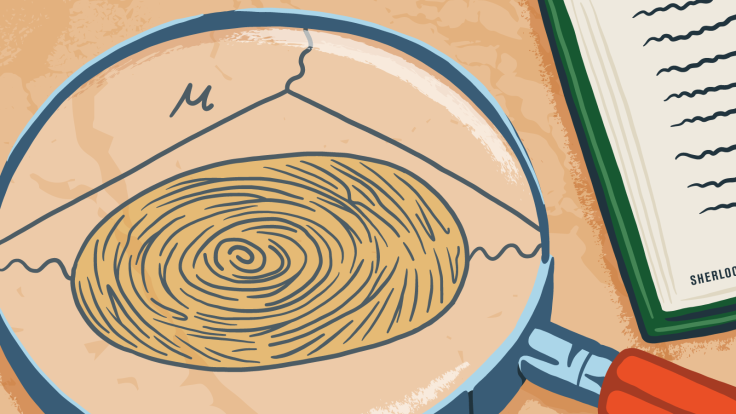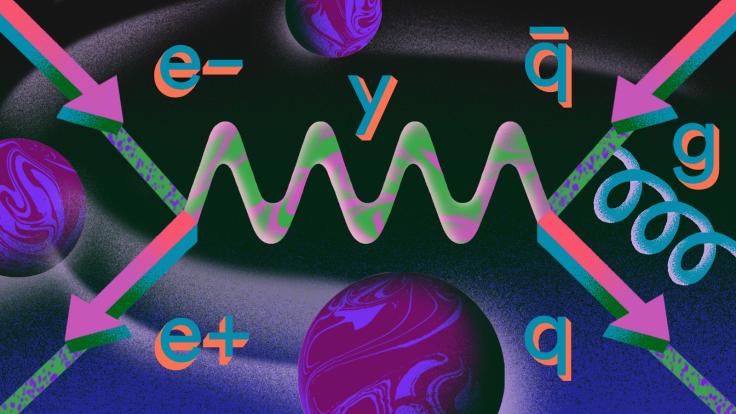In the 1930s, scientists thought they had matter figured out. Matter was atoms; atoms were protons, neutrons and electrons; and that was that.
Then they discovered the muon—a surprisingly heavy cousin of the electron with no apparent purpose other than to baffle scientists. The muon was so unexpected that, regarding its discovery, Nobel laureate Isidor Isaac Rabi famously quipped, “Who ordered that?”
Seventy-five years later, much of the mystery surrounding the muon has dissipated. Scientists have pinned down its mass to eight decimal places, know its half-life to the picosecond and have even found ways to manipulate it for use in science and industry. And yet many scientists believe that there is more to the muon than meets the eye.
“The muon will have the last laugh,” says Mark Lancaster, a professor at the University College London who focuses on muon research. “There’s still a lot we don’t know about fundamental interactions and the subatomic world, and we think that the muon might have the answers.”
Out of the 16 particles in the Standard Model, the muon is becoming the focus of research for more and more physicists, who seek both to understand its unique properties and to use it as a probe of the rest of the subatomic world.
“Muons are special,” says Chris Polly, a Fermilab physicist involved in muon research. “They are light enough to be produced copiously, yet heavy enough that we can use them experimentally to uniquely probe the accuracy of the Standard Model.”
Muons could help answer some of the big questions of particle physics: Why are there so many particles? Are there hidden symmetries? Are there other, undiscovered subatomic forces?
An international effort to explore rare subatomic processes using intense beams from particle accelerators has spawned opportunities to study the muon. Experiments at institutions including Fermilab, Brookhaven National Laboratory, Paul Scherrer Institute in Switzerland and the Japanese Proton Accelerator Research Complex will bring the scientific community closer to understanding not only the properties of the muon, but also the subatomic fabric of the universe.
This stream is brought to you by: Fermilab's Visual Media Services
A race against time?
Even though the muon is one of the most accessible subatomic particles, it has its share of characteristics that make it enigmatic and exciting.
Muons are about 200 times heavier than the electron. While this larger mass makes them interesting, it also makes them unstable. Whereas electrons live forever, muons exist for only about two microseconds—or two millionths of a second—before they decay. If a muon were produced at the exact same time a gun was fired, the muon would decay long before the bullet left the barrel.
But for particle physicists, who work with particles traveling close to the speed of light, two microseconds is, essentially, forever.
Physicists buy time by accelerating particles. Particles in accelerators travel faster—around a million times faster—than a speeding bullet. And when something travels near the speed of light, Einstein’s theory of relativity kicks in and allows it to live longer than classical mechanics predicts.
“We don’t need particles to live forever in order for them to be interesting. They just need to live long enough for us to study them,” Polly says. “Because these particles are traveling near the speed of light, their relativistic lifetime is much longer and we have more than enough time to make experimental measurements.”
With extremely fast speeds and special relativity on their side, muons are appealing research specimens. Their limited life span and middle-of-the-road mass also gives muons unique characteristics that could explain strange aspects of the Standard Model and even illuminate new physics, such as the existence of new particles and new subatomic processes.
Breaking family bonds
The muon is one of 16 fundamental particles that make up everything—all matter, all forces, all energy—in the visible universe. These particles exist in their own microscopic community. There are the quarks, which always hang together; the lone-ranger neutrinos, which are just passing through; the antisocial charged leptons, which like to have their own space; and the diplomatic bosons, which mediate every interaction.
To decipher the dynamics of this community—and thus understand the fabric of existence—scientists are using muons to study the behaviors and characteristics of particles themselves.
One aspect of community dynamics scientists think muons might illuminate is the relationship between the families, or generations, of matter.
All matter is divided into three generations. Each quark is paired with a sibling—up-down, charm-strange, top-bottom—and every charged lepton has a little neutrino side-kick—electron-electron neutrino, muon-muon neutrino, tau-tau neutrino.
In the quark world, family members change easily into one another, the equivalent of your daughter morphing into your nephew. Every time an atom undergoes beta decay, in which a neutron turns into a proton, a down quark turns into an up quark.
But some quarks change into quarks outside their family: the equivalent of your daughter morphing into your neighbor’s nephew. The strange quark, for example, almost always decays into the lighter up quark, which is outside its family.
Do muons do it?
In the late 1990s, scientists discovered that not only quarks violate the sacred bonds of family; neutrinos do, too.
“Quarks do it, neutrinos do it. Do muons do it?” asks Bob Bernstein, a Fermilab experimental physicist. “We think that it’s possible, but we really don’t know.”
Bernstein is the co-spokesperson for Mu2e, an experiment that looks for muon-to-electron conversions in which the muons act like quarks and ignore the idea of sticking with their own family during their decay into lighter particles.
“Normally a muon decays into an electron, an anti-electron neutrino and a muon neutrino,” Bernstein says. “Even though the muon no longer exists after this decay, the muon neutrino preserves the muon’s, well, muon-ness. But if no neutrinos are made and that muon turns cleanly into an electron, then the muon-ness is lost.”
Several experiments around the world are designed to determine the family dynamics of the charged leptons. Understanding this relationship will not only give insight into the relationships between the particles in the Standard Model, but could reveal new particles and processes.
“We really don’t know what’s going on at the most fundamental level,” says Lancaster, a collaborator on the Japanese experiment COMET, which will also look for muon-to-electron conversions. “If we don’t observe this conversion, there might be something that is preventing muons from changing into electrons, some sort of unbreakable symmetry. But if we do observe it, there could be new particles that mediate novel processes. Anything is possible, but we won’t know what until we test it experimentally.”
Bernstein agrees. “If we discover that this change is possible, then we learn something basic about the universe—that all fundamental particles behave the same. But if this conversion is not possible—if we don’t see muons converting into electrons—then we learn that we are more ignorant than we thought we were.”
Are we missing something?
Other muon researchers are testing the mathematical models that predict muon behavior. When mathematical predictions and experimental results differ, discoveries are made.
One value scientists are interested in determining is the precession, or wobble, of muons in magnetic fields.
“Particles act a little like tops,” says Polly, who works on the Muon g-2 experiment at Fermilab. “Undisturbed, they spin on point, but if they are perturbed, they start to wobble as they spin. In our experiment, we are perturbing muons by placing them in a magnetic field, measuring the rate of wobble and comparing it to the predicted value.”
Just as a top spinning on a tile floor will wobble differently than a top spinning on a carpet, a muon’s precession is influenced by the subatomic environment.
“We can’t just pick up a microscope and look at what’s happening in the subatomic world,” says Polly. “We need to use indirect approaches to determine what’s going on. Looking at a muon’s precession is one approach.”
Forty years of simulations, calculations and experimentation have resulted in a pretty good understanding of some of the subatomic world, and scientists use this accumulation of knowledge to develop mathematical models that predict experimental results. Sometimes they are spot on—as with the prediction and subsequent discovery of the charm quark in 1974.
But other times, they are dead wrong—a clear indication that something is missing from the model. Scientists experienced this in 1933 when the predicted proton-precession rate differed from the experimental value by more than a factor of two. After a few decades of head scratching, scientists at SLAC busted the proton into pieces and discovered that it was made of quarks. The original prediction was wrong because it was based on the false assumption that the proton was a point particle.
Many muon scientists hope that pinning down the muon precession rate will illuminate some inconsistencies in the Standard Model. In an experiment conducted at Brookhaven, scientists found a hint of a discrepancy between the predicted and experimental values, but the experimental and theoretical uncertainties were still too large for a definite answer.
“The discrepancy between the Brookhaven experiment and the Standard Model prediction is significant, but a result as extraordinary as this requires incontrovertible proof that can only be realized with further improvements in both the experiment and the theory,” says Polly. “If we can confirm this discrepancy, then we know there must be some hidden factor we are not taking into account. This hidden factor could be anything from new particles interacting with the muons to the discovery that muons are not, in fact, fundamental particles after all.”
Endless opportunities
The muon’s puzzling appearance and subsequent identification as a unique and autonomous particle perplexed scientists and revolutionized the field of particle physics. It was the precursor to the three generations of matter and opened the door for the discovery of quarks and other particles.
Today scientists can manipulate the muon and use it as a tool not only for particle physics research but also for cosmology, archeology and public safety. They have used muons to test special relativity and time dilation and to probe the interiors of pyramids for secret chambers. Today scientists use muons to image novel materials such as high-temperature superconductors, to study chemical reactions, to look for hidden nuclear weapons and even to determine things as delicate as the size of a proton.
Scientists even have proposed building muon colliders that will outshine any traditional proton or electron collider. These machines would be the gateway to new processes, particles and physics that only the muon can unlock.
“The muon has a few more surprises in store for us,” says Lancaster. “Stay tuned, because it’s really only the beginning.”









